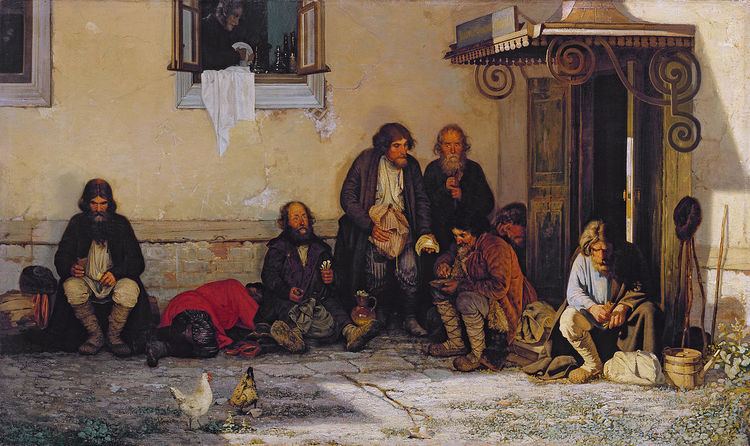 | ||
A zemstvo (Russian: земство; [ˈzʲɛmstvə], plural zemstva - Russian: земства) was an institution of local government set up during the great liberal reforms carried out in Imperial Russia by Emperor Alexander II of Russia (reigned 1855-1881). Nikolay Milyutin elaborated the idea of the zemstva, and the first zemstvo laws went into effect in 1864. After the October Revolution of 1917 the zemstvo system was shut downTemplate:Alexander III and replaced by a system of workers' councils ("soviets").
The system of local self-government in the Russian Empire was represented at the lowest level by the mir and the volost and was continued, so far as the 34 Guberniyas (governorates) of old Russia were concerned, in the elective district and provincial assemblies (zemstvo).
Alexander II instituted these bodies, one for each district and another for each province or government, in 1864. They consisted of a representative council (zemskoye sobranye) and of an executive board (zemskaya uprava) nominated by the former. The board consisted of five classes of members:
The nobles received more weight in voting for a zemstvo, as evidenced by the fact that 74% of the zemstvo members were nobles, even though nobles comprised inly 1.3% of the population. Even so, the zemstvo allowed the greater population to have a say in how a small part of their communities would operate.
The rules governing elections to the zemstvos were taken as a model for the electoral law of 1906 and are sufficiently indicated by the account of this given below. The zemstvos were originally given large powers in relation to the incidence of taxation and such questions as education, medical relief, public welfare, food supply, and road maintenance in their localities, but radicals, such as the Socialist Revolutionary Party and the nihilists, met them with hostility, believing that the reforms were too minor. These powers were, however, severely restricted by Alexander III (law of 25 June [O.S. 12 June] 1890); the zemstvos were then subordinated to the governors, whose consent was necessary for each decision. The governors had drastic powers of discipline over the members.
Despite all these restrictions, during the 50 years of the zemstvos, they succeeded in solving many problems of general education, public medical service, means of transportation and agronomy.
Zemstvo expenditure grew from 89.1 million rubles in 1900 to 290.5 million rubles in 1913. Of the latter sum, 90.1 million rubles were spent on education, 71.4 million on medical assistance, 22.2 million on improvements in agriculture, and 8 million on veterinary measures. The chief sources of zemstvo revenue were rates on lands, forests, country dwellings, factories, mines and other real-estate.
Philately uses the term zemstvo stamp to refer to local-issue Russian postage stamps from this period.
All-Russian Zemstvo Union
The All-Russian Zemstvo Union was set up in August 1914 to provide a common voice for all the Zemstvos. It was a liberal organisation which after 1915 operated in conjunction with the Union of Cities.
